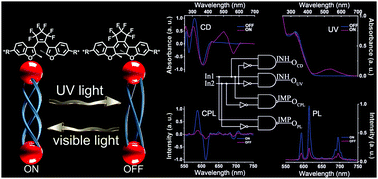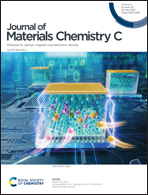A light triggered optical and chiroptical switch based on a homochiral Eu2L3 helicate†
Abstract
Optical and chiroptical photoswitches have found potential applications in advanced information technologies. Herein, a pair of chiral triple-stranded helicates [Eu2(o-LRR)3](TOf)6 and [Eu2(o-LSS)3](TOf)6, which have chirality, luminescence and light stimuli-responsive properties, have been designed and synthesized. The ligands o-LRR/SS are composed of photochromic diarylethene moieties as spacers and two chiral 2,6-dipicolinic amides as coordination units. Through the comprehensive spectral characteristics in combination with semiempirical geometry optimization using the Sparkle/RM1 model, it was confirmed that (R/S)-1-phenylethanamines decorated at the terminals of ligands successfully controlled the stereoselective self-assembly of the helicates. Upon alternating UV and visible light irradiation, the diarylethene experienced a reversible change between a colorless open-ring state and a pink closed-ring state. This photochromic process caused variations in the electronic structure and ligand conformation, and led to the presence of light-responsive optical (UV and PL) and chiroptical (ECD and CPL) switching properties. The helicate may, therefore, be considered as a completely reversible +/− ECD and on/off CPL switch. Furthermore, on the basis of these light-switchable optical properties, the INHIBIT and IMPLICATION logic gates were fabricated.



 Please wait while we load your content...
Please wait while we load your content...